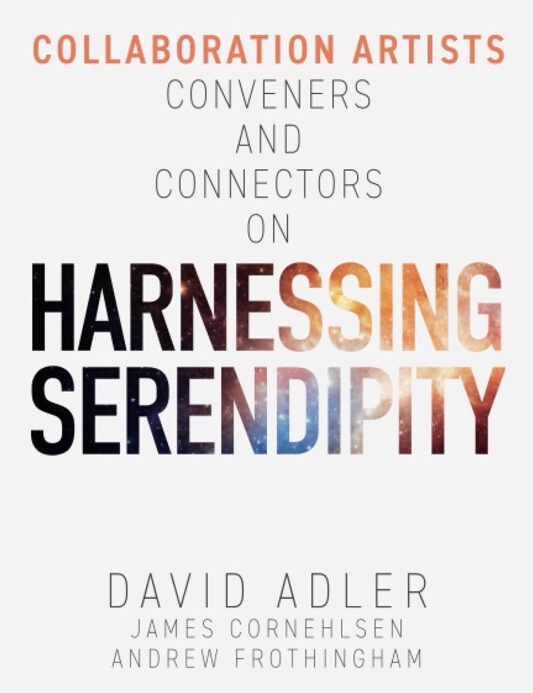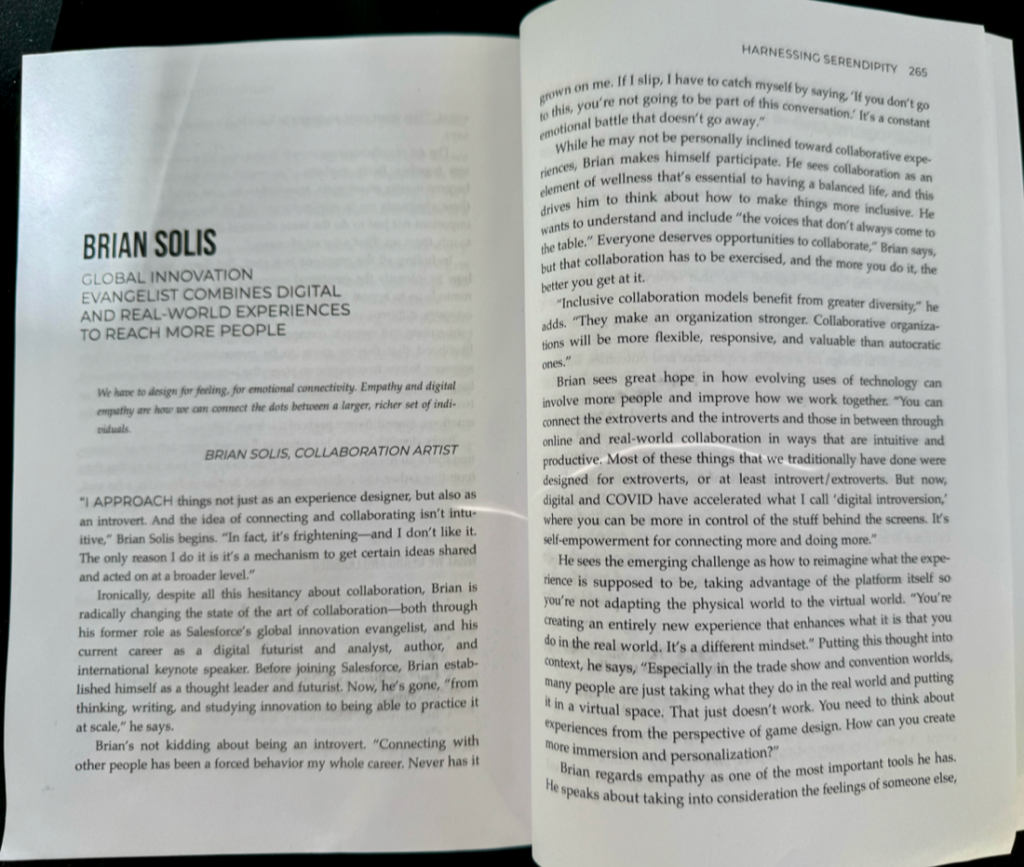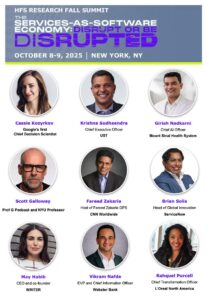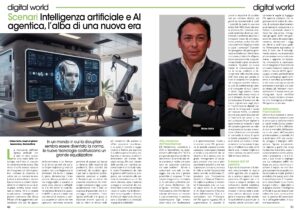David Adler, along with James Cornehlsen and Andrew Frothingham, authored the new book, Harnessing Serendipity. I’ve known David for years. He’s the Chairman & Founder, BizBash. He’s also a friend.
Harnessing Serendipity is a book written for visionary and creative leaders to unlock the potential of artful collaboration.
The book features invaluable insights from 65 thought-leaders and change-makers across multiple industries, including me! Thank you, David!
This curated group of “collaboration artists” share their stories, philosophies, and methods, to help you rethink your approach to problem-solving, innovation, and how to set and achieve your goals.
I’d like to share my story with you and encourage you to read the book. I learned so much from other leaders across different industries and fields!
I remember this interview vividly. I was on the pool deck at the W Hotel in Nashville. I had just finished presenting to Tractor Supply about the potential new futures for rural retail innovation. When I received David’s call, I sat in an empty cabana, looked out across the city of Nashville, and savored this entire conversation.
Brian Solis
Global Innovation
Combines Digital and Real-World Experiences to Reach and Influence More People
“I approach things not just as an experience designer, but also as an introvert. And the idea of connecting and collaborating isn’t intuitive to me,” Brian Solis begins. “In fact, it’s frightening The only reason I do it is it’s a mechanism to get certain ideas shared and acted on at a broader level.”
Ironically, despite all this hesitancy about collaboration, Brian is radically changing the state of the art of collaboration—both through his former role as Global Innovation Visionary and Strategist at Salesforce and now as Head of Global Innovation at ServiceNow. This is someone who works with hundreds of executives at some of the biggest organizations around the world to help them innovate and transform. Before that, his role as a digital futurist and principal analyst at Altimeter Group helped transform the technology industry and how business leaders approach innovation and digital transformation. Plus, this introvert has published eight best-selling books and keynotes events all around the world!
Now, he’s gone, “from thinking, writing, and studying innovation to being able to practice it at scale,” he says.
Brian’s not kidding about being an introvert.
“Connecting with other people has been a forced behavior my whole career. Never has it grown on me to become second nature. If I slip, I have to catch myself by saying, ‘If you don’t go to this or meet these people, you’re not going to be part of this conversation.’ And as the Cluetrain Manifesto famously observed, ‘markets are conversations.’ It’s a constant emotional battle that doesn’t go away.”
While he may not be personally inclined toward collaborative experiences, Brian makes himself participate. He sees collaboration as an element of wellness that’s essential to having a balanced life, and this drives him to think about how to make things more inclusive. He wants to understand, include, and represent “the voices that don’t always come to the table.”
“Everyone deserves opportunities to collaborate,” Brian Says, but that collaboration has to be exercised. The more you do it, the better you get at it.
“Inclusive collaboration models benefit from greater diversity,” he adds. “They make an organization stronger. Collaborative organizations will be more flexible, responsive, and valuable than autocratic ones.”
Brian sees hope in how evolving uses of technology can involve more people and improve how we work together.
“You can connect the extroverts and the introverts and those in between through online and real-world collaboration in ways that are intuitive and productive. Most of the collaborative exercises and tools that we traditionally use are not designed to give everyone a voice or optimized to bring out their best ideas. But now, digital and a global pandemic have accelerated what I call ‘digital introversion,’ where you can be more in control of the stuff behind the screens. It’s self-empowerment for connecting more and doing more.”
He sees the emerging challenge as an opportunity to reimagine what the experience is supposed to be, taking advantage of platforms and human nature to foster inclusivity, creativity, and collaboration. You’re not adapting the physical world to the virtual world. “You’re creating an entirely new experience that enhances what it is that you do in the real world. It’s a different mindset.”
Putting this thought into context, he says, “Especially in the events, networking, and conference/tradeshow worlds, many people are just taking what they do in the real world and putting it in a virtual space. That just doesn’t work for everyone. You need to think about experiences from the perspective of social media and game design. How can you create more immersion, interaction, and personalization in ways that maximize the platform to unlock intuitive and transcendent experiences? How do you bring everyone to the table, give them a voice, and motivate them to share their ideas?”
Brian regards empathy as one of the most important tools he has. He speaks about taking into consideration the feelings and aspirations of someone else, and keeping in mind that not all ideas can be extracted from each individual the same exact way. In his work, he extends the concept of empathy to what he calls “Digital Empathy.”
“I call digital empathy a love language,” he says. “Look at millennials and centennials, or Gen Y and Gen Z. They are digital-first, or digital-native, communities. The connect, communicate, and act differently. Their desired experiences are different. The better you integrate technology into a real-world setting using human-centered approaches, the more intuitive (and better) it is for them. You’re essentially designing for a native platform for human connections to foster the electricity of both digital and physical engagement. You’re not using digital to be digital. You use digital as a means of engaging both brain and biology, naturally. You bring the best of physicality and digital together so that everybody’s operating in a way that’s second nature.”
Brian is frank about the challenges involved in getting people to do things they aren’t initially inclined to do. “As an experience designer, it’s your job to design for specific experiences and outcomes [think customer experience (CX), employee experience (EX), brand experience (BX)]. But you can’t assume. You can’t impose your experiences and outcomes upon people. You have to work to align people around shared interests, objectives, and outcomes that people can work towards in a meaningful way. You need to bring people together around a shared purpose, a series of missions people are mutually vested in achieving. This is why the best experiences start with empathy. You have to understand and become the people you’re trying to engage.”
He illustrates this idea with a story about Muhammad Ali. “Ali said, ‘I don’t like working out, but I do visualize what being a champion looks and feels like.’ Collaborating is a form of exercise, but you’re doing it in a way that visualizes what the shared desired outcome is for everyone.”
Ultimately, the best way to get a sense of the power and sophistication of Brian’s approach is to listen to him describe it in use.
“We were working on an experiment around strategic networking using AI, near-field communication (NFC), and neuro-linguistic programming (NLP). The question was, ‘how do you get people to network when not everybody is a networker and how do you get the right people together from the onset?’ The premise was that you want to foster the type of engagement that takes advantage of why people are there: There’s usually a shared set of interests, favorite experiences, and desired aspirations and outcomes.”
“The solution involved designing this really cool and fun quiz to get everyone to participate,” he continues. “People got the quiz before the event. Whether you were extroverted or introverted, you felt it was your safe space, so you were motivated to answer the questions because you knew it would shape your experience. They were designed psychologically to nurture participation and bring out the type of information that was going to set the stage for the right types of connections and collaboration.”
The quiz allowed the team to skip things like icebreakers or random networking elevating the ability for people to find people like them. “Different people react differently. We fed a customer database where we used AI to match people with shared interests and outcomes and complementary modalities. Then we created a geolocation button that we placed on event badges so we could connect people on visual maps or through sound/lighting as they got closer to people that were interested in the same things. You could also view a digital heat map to find people and optimize your time on site.”
Brian describes it as “strategic serendipity.” It stripped out the awkwardness of ‘What do you do?’ or ‘Tell me more about you.’ “It broke down barriers and fostered meaningful connections, faster and accurately.” And it prompted connection between people to leapfrog the idle chats to get to productive and collaborative conversations sooner. People saved time, energy, and were able to get the most out of their experiences as a result.
In closing, Brian returns to the importance of designing for emotion inspired by empathy.
“There are only two kinds of experiences that people remember: those that suck and those that are extraordinary,” he says. “Everything in between is just transactional and forgettable. Too often, collaboration has been thought of as work that’s largely transactional and absent of emotionality. We have to design for feeling, for emotional connectivity. That’s where empathy becomes instrumental. Empathy and digital empathy are how we connect the dots between people to accelerate creative and strategic serendipity. Human-centered design partnered with technology then plays the role of enabler and facilitator. This amplifies opportunities for problem-solving, invention, and innovation. And that’s just want the world needs, solutions and community.”
What We Heard and Learned
The moment is right for reimagining connections and collaboration…this is our “iPhone moment.”
Realize that you and those on your team aren’t reflective of the audience or the total prospective audience. You have to understand them to engage them.
Gain and practice empathy. Practice empathy and digital empathy and speak the love language of those who connect and collaborate differently.
Align people around shared interests and aspirations and make connections and journeys intuitive, experiential, and constructive.
Challenge yourself. Design against the best, most innovative experiences, outside of your industry.
Please read the stories of 64 other collaboration artists in Harnessing Serendipity.







Leave a Reply